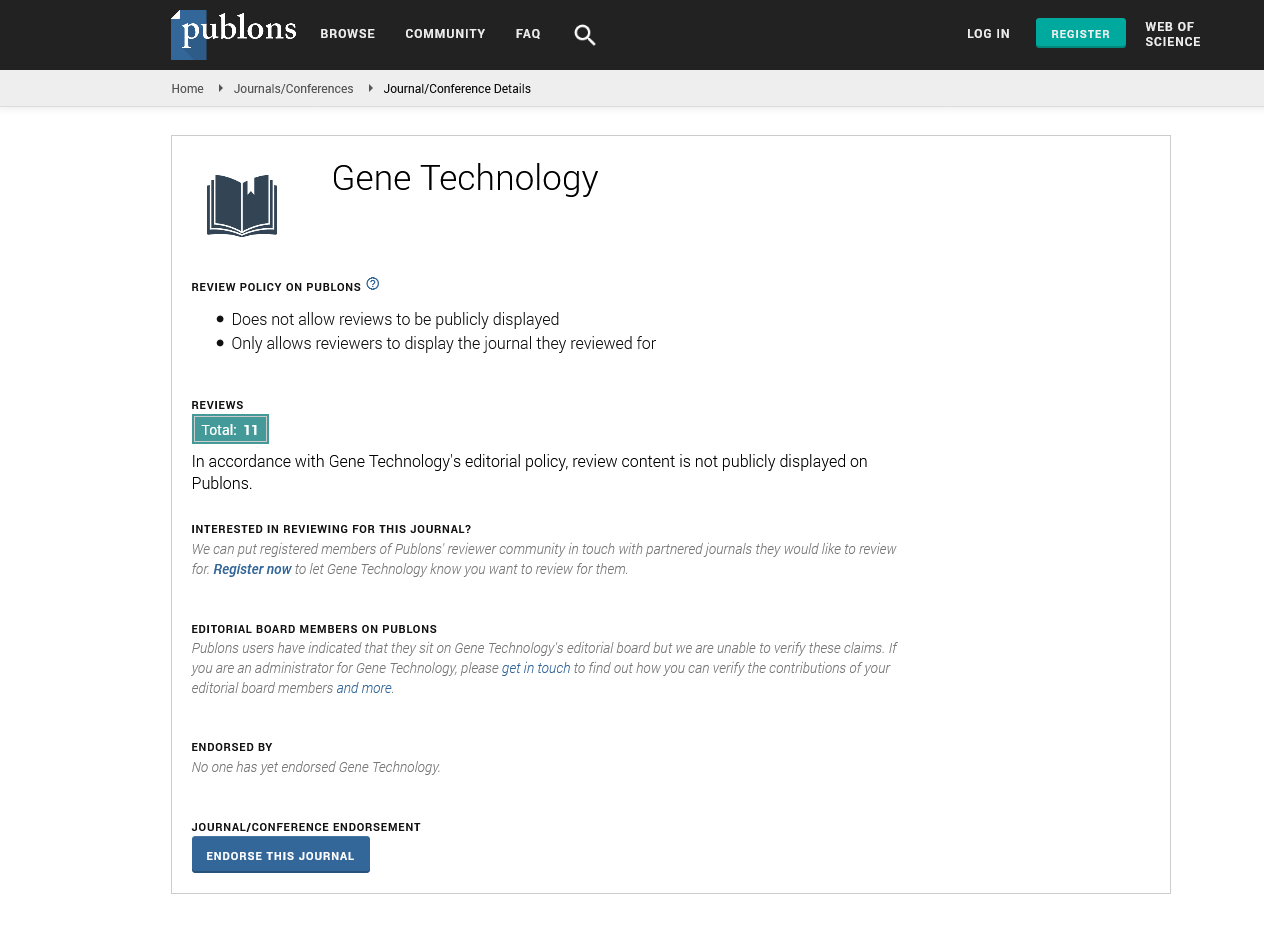Indexed In
- Academic Keys
- ResearchBible
- CiteFactor
- Access to Global Online Research in Agriculture (AGORA)
- RefSeek
- Hamdard University
- EBSCO A-Z
- OCLC- WorldCat
- Publons
- Euro Pub
- Google Scholar
Useful Links
Share This Page
Journal Flyer

Open Access Journals
- Agri and Aquaculture
- Biochemistry
- Bioinformatics & Systems Biology
- Business & Management
- Chemistry
- Clinical Sciences
- Engineering
- Food & Nutrition
- General Science
- Genetics & Molecular Biology
- Immunology & Microbiology
- Medical Sciences
- Neuroscience & Psychology
- Nursing & Health Care
- Pharmaceutical Sciences
Opinion Article - (2024) Volume 13, Issue 2
Genetic and Epigenetic Mechanisms in the Development of Cushing's Syndrome
Manlio Dobrev*Received: 03-Jun-2024, Manuscript No. RDT-24-26183; Editor assigned: 06-Jun-2024, Pre QC No. RDT-24-26183 (PQ); Reviewed: 20-Jun-2024, QC No. RDT-24-26183; Revised: 27-Jun-2024, Manuscript No. RDT-24-26183 (R); Published: 04-Jul-2024, DOI: 10.35248/2329-6682.24.13.285
Description
Extended exposure to high glucocorticoid levels, mainly cortisol, is the hallmark of Cushing Syndrome (CS), a complicated endocrine condition. This condition can result from various causes, including endogenous overproduction of cortisol due to pituitary adenomas (Cushing disease), adrenal adenomas or carcinomas, ectopic Adrenocorticotropic Hormone (ACTH) secretion by non-pituitary tumors, or exogenous administration of glucocorticoids. Understanding the genetic and epigenetic mechanisms underlying Cushing's syndrome is important for developing targeted therapies and improving patient outcomes.
Genetic mechanisms in Cushing syndrome
An important part of the pathophysiology of Cushing syndrome is caused by genetic mutations and changes. These genetic factors can influence various components of the Hypothalamic- Pituitary-Adrenal (HPA) axis, leading to dysregulated cortisol production.
Mutations in PRKAR1A Gene: Protein kinase A (PKA), an enzyme involved in intracellular signaling cascades, has a regulatory component type 1-alpha that is encoded by the PRKAR1A gene. Mutations in PRKAR1A are associated with Carney complex, a genetic disorder that includes pituitary adenomas leading to Cushing's syndrome. These mutations result in increased PKA activity, promoting abnormal cell growth and hormone secretion.
Mutations in USP8 Gene: Cushing's disease-causing corticotroph adenomas frequently have mutations in the Ubiquitin-Specific Protease 8 (USP8) gene. USP8 mutations lead to increased deubiquitination and stabilization of the Epidermal Growth Factor Receptor (EGFR), enhancing corticotroph cell proliferation and ACTH secretion.
Mutations in MEN1 Gene: Multiple Endocrine Neoplasia Type 1 (MEN1) is a hereditary condition caused by mutations in the MEN1 gene, which encodes menin, a tumor suppressor protein.
MEN1 mutations can lead to the development of pituitary adenomas, among other endocrine tumors, resulting in Cushing syndrome. Menin plays a role in regulating cell proliferation and gene expression, and its loss contributes to tumorigenesis.
Epigenetic mechanisms in Cushing syndrome
Epigenetic modifications, which involve changes in gene expression without altering the underlying DNA sequence, are increasingly recognized as important contributors to the development of Cushing's syndrome. Histone alterations, non- coding RNAs, and DNA methylation are some examples of these modifications.
DNA methylation: Gene silence is commonly the result of DNA methylation, which is the attachment of a methyl group to cytosine residues in DNA. Aberrant DNA methylation patterns have been observed in both pituitary adenomas and adrenal tumors associated with Cushing syndrome. Hypermethylation of tumor suppressor genes, such as RASSF1A and CDKN2A, can result in their silencing and promote tumor growth and hormone secretion.
Histone modifications: Histone proteins, around which DNA is wrapped, can undergo various post-translational modifications, such as acetylation, methylation, and phosphorylation. Altered histone modification patterns have been implicated in the pathogenesis of Cushing syndrome.
Non-coding RNAs: Non-coding RNAs, including microRNAs (miRNAs) and long non-coding RNAs (lncRNAs), play critical roles in regulating gene expression. Dysregulation of miRNAs and lncRNAs has been linked to the development of endocrine tumors and Cushing's syndrome. Specific miRNAs, such as miR-200c and miR-375, have been found to be overexpressed in corticotroph adenomas, affecting cell proliferation and hormone secretion. Similarly, lncRNAs can modulate gene expression by interacting with chromatin, transcription factors and other regulatory molecules contributing to tumorigenesis.
Implications for diagnosis and treatment
Understanding the genetic and epigenetic mechanisms underlying Cushing's syndrome has important implications for diagnosis, prognosis, and treatment.
Diagnostic biomarkers: Genetic and epigenetic alterations can serve as biomarkers for the diagnosis and differentiation of various forms of Cushing's syndrome. For instance, the detection of USP8 mutations in corticotroph adenomas can help confirm the diagnosis of Cushing's disease. Similarly, assessing DNA methylation patterns and miRNA expression profiles can aid in distinguishing between benign and malignant adrenal tumors.
Targeted therapies: The identification of specific genetic mutations and epigenetic changes has opened new avenues for targeted therapies. Inhibitors of mutant USP8, EGFR, and PKA pathways are being investigated as potential treatments for Cushing's disease. Additionally, epigenetic therapies, such as DNA methyltransferase inhibitors and histone deacetylase inhibitors, for modulating aberrant gene expression and inhibiting tumor growth.
Personalized medicine: Advances in genomic and epigenomic technologies enable personalized medicine approaches for Cushing's syndrome. By characterizing the genetic and epigenetic landscape of individual patients, clinicians can treatment strategies to target specific molecular alterations.
Mutations in genes such as PRKAR1A, USP8, and MEN1, as well as epigenetic modifications like DNA methylation and histone modifications, contribute to the dysregulation of cortisol production and tumorigenesis. Understanding these mechanisms has profound implications for the diagnosis, treatment, and management of Cushing's syndrome.
Citation: Dobrev M (2024) Genetic and Epigenetic Mechanisms in the Development of Cushing Syndrome. Gene Technol. 13:285.
Copyright: © 2024 Dobrev M. This is an open-access article distributed under the terms of the Creative Commons Attribution License, which permits unrestricted use, distribution, and reproduction in any medium, provided the original author and source are credited.

